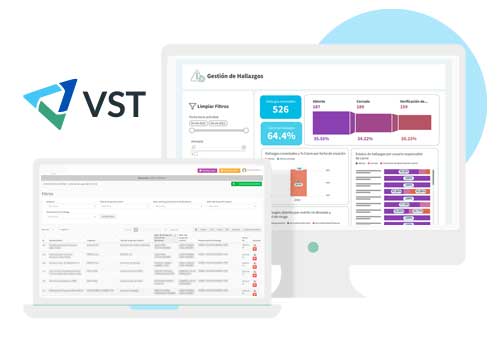
Educating for Sustainability: Why Environmental Awareness Matters
In today’s world, sustainability awareness has become a crucial aspect

This is where Big Data Analytics comes into play, providing powerful tools and technologies that enable organizations to gain insights and improve efficiency in data reporting.
Big Data Analytics is a fascinating field that involves processing large and complex data sets to obtain meaningful insights. It has become increasingly important in recent years due to the exponential growth of digital data.
The process of Big Data Analytics involves collecting data from various sources, often in real-time, and analyzing it to identify patterns and trends. With the help of statistical and machine learning algorithms, organizations can make informed decisions that positively impact their bottom line.
Gartner analyst Doug Laney first coined Big Data in the early 2000s. However, the concept of processing and analyzing extensive data set dates back to the 1950s, when IBM introduced the first computer for scientific use. Since then, technological advancements have led to the growth of Big Data.
The rise of the Internet, social media, mobile devices, and the Internet of Things has resulted in unprecedented digital data. This data is being generated at an incredible rate, and it is estimated that by 2025, 463 exabytes of data will be created each day.
Big Data Analytics involves three main components: data processing, analysis, and visualization. Data processing consists in collecting, cleaning, and transforming data into a suitable format for research.
Data analysis involves applying statistical and machine learning algorithms to identify patterns and trends. This process can be time-consuming, but it is essential for obtaining meaningful insights. Finally, data visualization involves presenting the insights obtained in a visually appealing and easily understandable manner.
Big Data has become crucial in decision-making processes across various industries, including healthcare, finance, retail, and telecommunications.
For example, in the healthcare finance industry, Big Data Analytics is being used to identify new treatments and improve patient outcomes. In finance, it is being used to detect fraud and manage risk. In retail, it is used to improve customer experience and increase sales. And in diverse industries, it is used to manage HSE data to improve productivity, prevent incidents and boost sustainability.
Overall, Big Data Analytics has the potential to revolutionize the way we make decisions and solve problems. As the amount of digital data continues to grow, the importance of Big Data Analytics will only increase.
HSE (Health, Safety, and Environment) software is designed to manage and optimize health, safety, and environmental processes within organizations. Big data plays a crucial role in enhancing the capabilities and effectiveness of HSE software. Here are some ways big data is used in HSE software:
Overall, big data empowers HSE software with advanced analytics and intelligence, enabling organizations to make data-driven decisions, reduce incidents, enhance safety, and achieve higher environmental sustainability standards.
Big Data Analytics is a powerful tool that can help businesses improve the efficiency of their data reporting processes. However, it is essential to understand how it works and the benefits it can provide.
One of the key benefits of Big Data Analytics is that it enables businesses to collect and integrate data from various sources in a streamlined and efficient manner. This means businesses can reduce the time and resources required to collect and process data, allowing them to focus on analyzing insights.
For example, a retail company can use Big Data Analytics to collect data from various sources such as social media, customer feedback, and sales data. This data can then be integrated and analyzed to gain insights into customer behavior, preferences, and trends. The retail company can save time and resources by streamlining the data collection and integration process while gaining valuable insights.
Another benefit of Big Data Analytics is that it allows businesses to automate data analysis and reporting. Businesses can process and analyze large amounts of data quickly and efficiently. By automating these processes, businesses can free up valuable resources and focus on making informed decisions based on Big Data insights.
For example, a healthcare organization can use Big Data Analytics to automate the analysis of patient data to identify patterns and trends. This can help healthcare professionals make informed decisions about patient care, improve patient outcomes, and reduce costs.
Big Data Analytics can also help reduce the risk of human error and bias in data reporting. Businesses can ensure that their data is analyzed accurately and objectively by automating processes and using machine learning algorithms. This results in more accurate insights and informed decision-making.
For example, a financial institution can use Big Data Analytics to automate the analysis of financial data to identify fraud and money laundering. By using machine learning algorithms to detect patterns and anomalies, the financial institution can reduce the risk of human error and bias in their reporting.
Big Data Analytics can also facilitate collaboration and communication across teams and departments. By providing a centralized platform for data sharing and insights, businesses can improve transparency and enable informed decision-making based on a complete picture of their data.
For example, a manufacturing company can use Big Data Analytics to share data and insights across different departments such as production, marketing, and sales. This can help the company identify areas for improvement, optimize production processes, and increase sales.
In conclusion, Big Data Analytics is a powerful tool that can help businesses improve the efficiency of their data reporting processes. By streamlining data collection and integration, automating data analysis and reporting, reducing human error and bias, and facilitating collaboration and communication, businesses can gain valuable insights and make informed decisions based on a complete picture of their data.
Big Data Analytics goes beyond mere data analysis. It uncovers valuable insights that enable businesses to make data-driven decisions, giving them an edge over their competitors.
Cutting-edge technologies, such as machine learning, cloud computing, and real-time data processing, have revolutionized the business landscape, enabling swift and efficient processing of massive amounts of data. Equally critical are data visualization tools that simplify the understanding and communication of these insights.
It’s important to highlight how Big Data Analytics is honed to catalyze insights and augment efficiency in data reporting. It’s an invaluable instrument that streamlines data collection and integration, automates data analysis and reporting, minimizes human error and bias, and facilitates collaboration and communication. Businesses, thus, gain meaningful insights and make decisions rooted in a comprehensive understanding of their data landscape.
However, as the digital world continues to expand, the complexity and volume of data will only grow. Here, Vela Sustainability Technologies, renowned for its specialized software, comes to the fore. Their cutting-edge solution, Clinical Health Management, ensures you stay ahead of this curve. This software tool integrates and analyses massive amounts of data and presents it in a clear and comprehensible format, ensuring that the full potential of Big Data can be harnessed effectively.
To fully appreciate software can streamline your data management and processing, Vela Sustainability Technologies invites you to request a demo.
It’s time to transform your business through data-driven insights, ensuring you are well-equipped for the future. Let Big Data Analytics be the wind in your sails, guiding your business toward uncharted territories of success.

In today’s world, sustainability awareness has become a crucial aspect

The Significance of April 28th: World Day for Safety and
